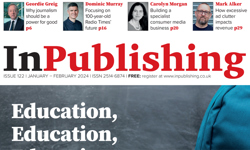1. Define your readership in terms of "wantedness". (The Economist’s Paul Rossi)
A relatively new expression to the UK but widely used in the US. It defines the relationship between the reader and the publication in terms of how much the reader "wants" it. It follows that the greater the degree of "wantedness" the more attractive the publication is as an advertising vehicle.
2. Use planning models. (Emap’s David Segal).
On a show of hands, only 10% of the audience said they use planning models! Intelligent forecasting and sound investment decisions require subscription planning models – so either build one or buy one. (Tip – call Alan Weaver)
3. Increasing price is best way to increase profitability. (Emap’s David Segal)
Tests on Construction News showed that a 1% increase in price would increase profit by 10.6%. A 1% increase in volume would increase profit by 5% and a 1% increase in loyalty (retention) by 6.6%. Bottom of the list was a 1% cut in costs which would only increase profits by 4.8%.
4. Real extra money comes from development. (Emap’s David Segal)
Best practice dictates that marginal improvements in acquisition and retention rates should always be strived for. But it’s not where the real money is. Development (selling new things to existing customers) via a consolidated marketing database is where the big money comes from.
5. Use every opportunity to build data. (Emap’s David Segal)
Never create a form or mailer without giving due consideration to data building. Data is easiest, and cheapest, to capture at acquisition. Going back to your readers later, cap in hand, and asking for data is a costly process.
6. Online: visit, register, pay. (The Economist’s Paul Rossi)
Typical web strategies are three pronged. Firstly build traffic. Secondly get visitors to register. Thirdly get them to pay for something.
7. Online: encourage repeat visits and build relationships. (RBI’s Simon Elgar)
Give visitors reasons to return and don’t rely on them to remember you. Use whatever content or means at your disposal (breaking news, jobs, forthcoming events). Get them to register for free newsletters which will include links back to the site.
8. Subscription execs need to be internet savvy. (New Scientist’s Natasha Ward)
For New Scientist the web is now the number one source of subscriptions. This means that execs need to be super literate on all web matters.
9. Controlled circulation is bloody hard work. (Jane’s’ Ruth Brooks)
My words not Ruth’s! Her targets last year were to increase the following: penetration in specified industries and geo areas, seniority of readership, levels of registrations, proportion of under one year registrations. Also reduce the cost of acquisition and reader service. Let no one ever knock cc.
10. Premium brands need premium customer service. (The Economist’s Paul Rossi)
Any touch point has to be brand good enough.
11. Digital editions can open up new markets. (New Scientist’s Natasha Ward)
New Scientist is considering offering a digital version in the far east. Postal charges and delivery times make serving this market too costly using traditional means.
12. Editorialise your reader offers. (BBC’s Gillian Carter)
The promotions and editorial teams on BBC’s Good Food work very closely in the selection and presentation of reader offers. Last Christmas’ roasting tin offer was shown over a DPS containing a letter from the editor and a picture of the tin complete with turkey, stuffing and spuds emerging resplendent from the hot oven. Mouth-watering. Result – 13,000 new subscribers.
13. Ten key ingredients for a successful subs campaign. (Nat Mag’s Karen Louth)
Keep it simple, create reasons to purchase, differentiate your product from competition, know your audience, reflect your brand consistently, be big, bold and innovative, apply learning for the future, have a follow up strategy, never lose sight of overall objective and ….. play to win.
14. Email: stick to direct marketing principles. (RBI’s Simon Elgar)
Don’t assume that because it’s quick and cheap, that there aren’t variables to test: format (text, html), subject line, sender, content, offer, lists. Increasing use of spam filters means that special care must be taken when composing subject lines; "enlargement" is probably a word to avoid. Incidentally Simon found that direct mail got better response but that the cost benefits made email more effective overall.
15. Lots of publishers ignorant of digital editions. (Zinio’s Jeff Bruce)
To be fair to Jeff this was my observation not his! He showed us an audio visual clip embedded into a digital edition of Rolling Stone. Judging by the gasps from the audience I would guess that few of them had seen a fully functioning digital edition – either that or the sound was turned up too high.
FEATURE
Golden nuggets
As part of their recent Magazine 2004 event, the PPA hosted a subscriptions conference entitled “Looking to the future?” James Evelegh went along to hear the pearls of wisdom. In no particular order, here are fifteen of them.










